Sometimes you may have seen birds similar to a cardinal. Several examples of birds that might have the same characteristics as one would be a Pine Grosbeak, Rose Finch, Red Crossbill, Hepatic Tanager, and more.
If you’re interested in learning more about similar birds to Cardinals, then you’re in luck! Here, we will go over our top 11 red birds that look like cardinals but aren’t!
Contents
1. Scarlet Tanager
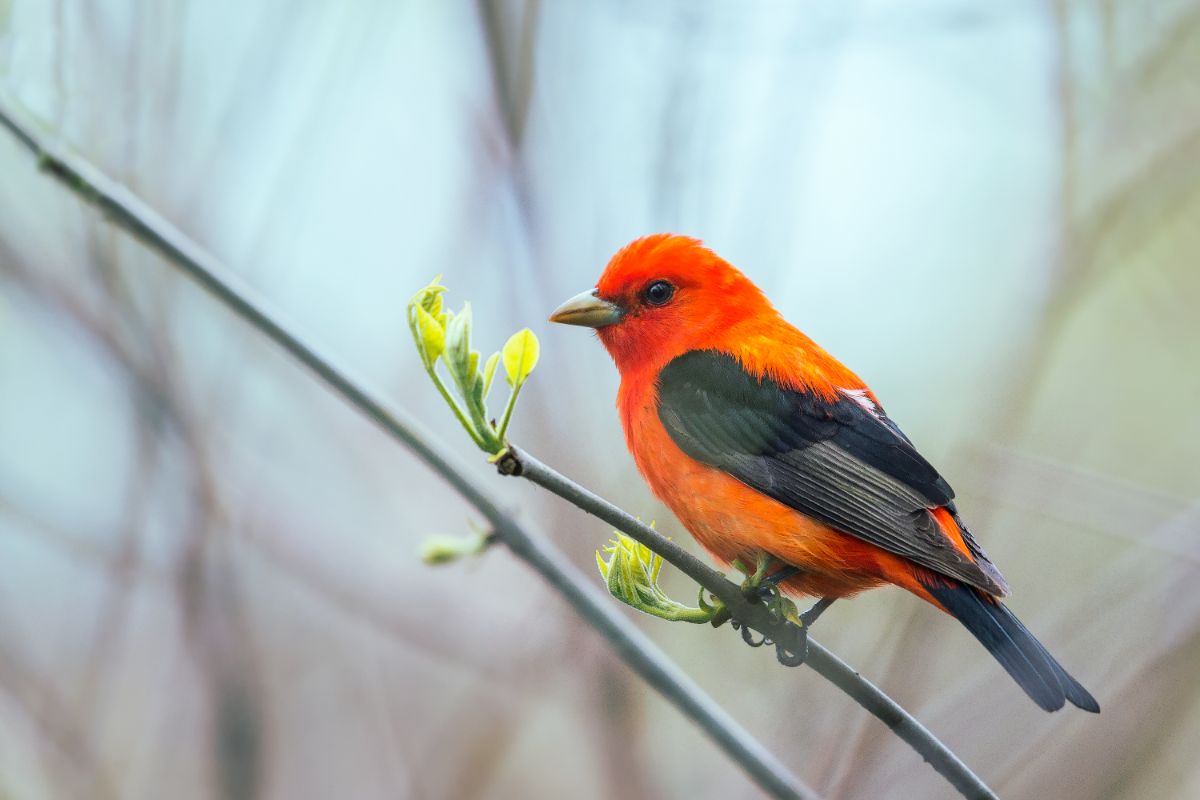
One of the similar bird types that are often mistaken for a cardinal would be a scarlet tanager. The physical difference between the two is that even though they both have red plumage, a scarlet tanager doesn’t have a black mask and their bills are tan instead of bright orange.
Their diet primarily consists of insects and fruit, currently residing in parts of North America, South America, and Central America.
- Length: 16 to 17 cm
- Width: 23 to 38 g
- Wingspan: 25 to 29 cm
2. Summer Tanager
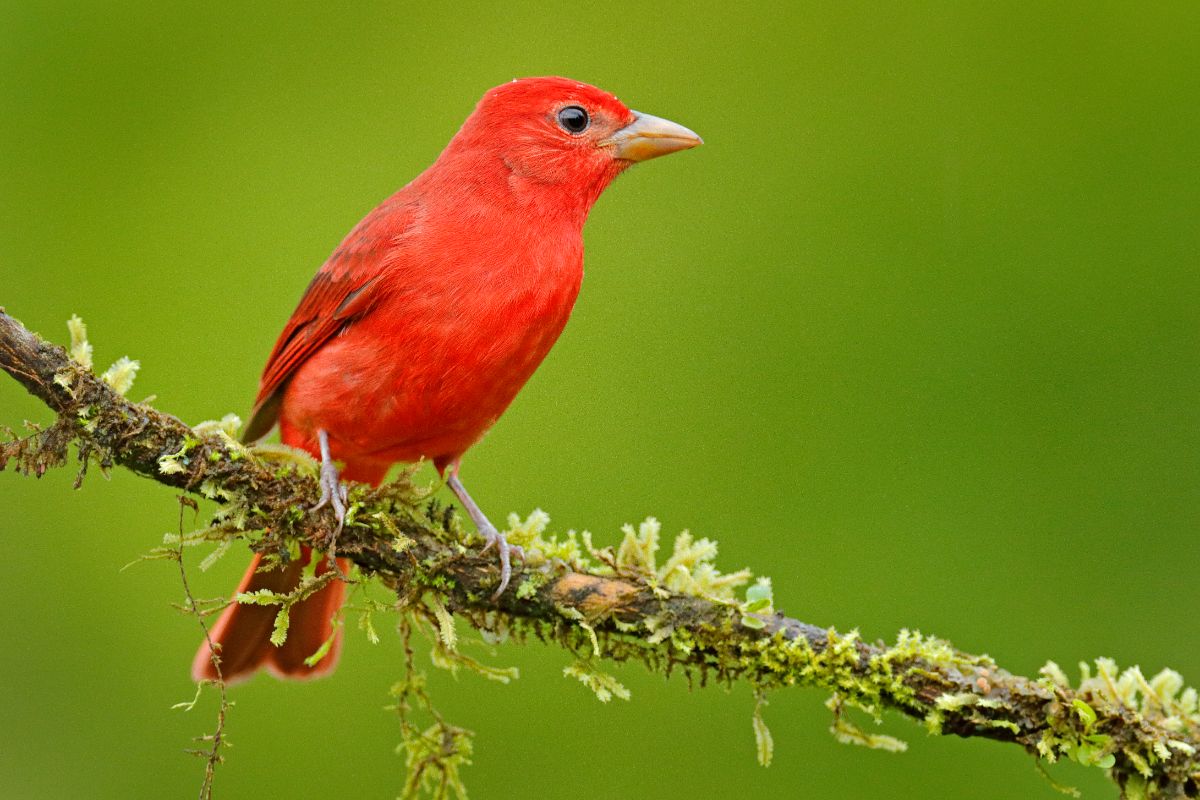
A summer tanager is another alternative that is often compared to a cardinal. In comparison to the scarlet tanager, it doesn’t have a black mask, and its plumage is also bright red. However, adult female summer tanagers are often yellow instead of red.
The summer tanager was a part of the tanager family but was reassigned to the cardinal family in 2016. Aside from their diet of insects, summer tanagers primarily eat fruits and berries. Although, sometimes, they mainly target wasps and bees.
- Length: 17 cm
- Width: 29 g
- Wingspan: 28 to 30 cm
3. Rose Finch
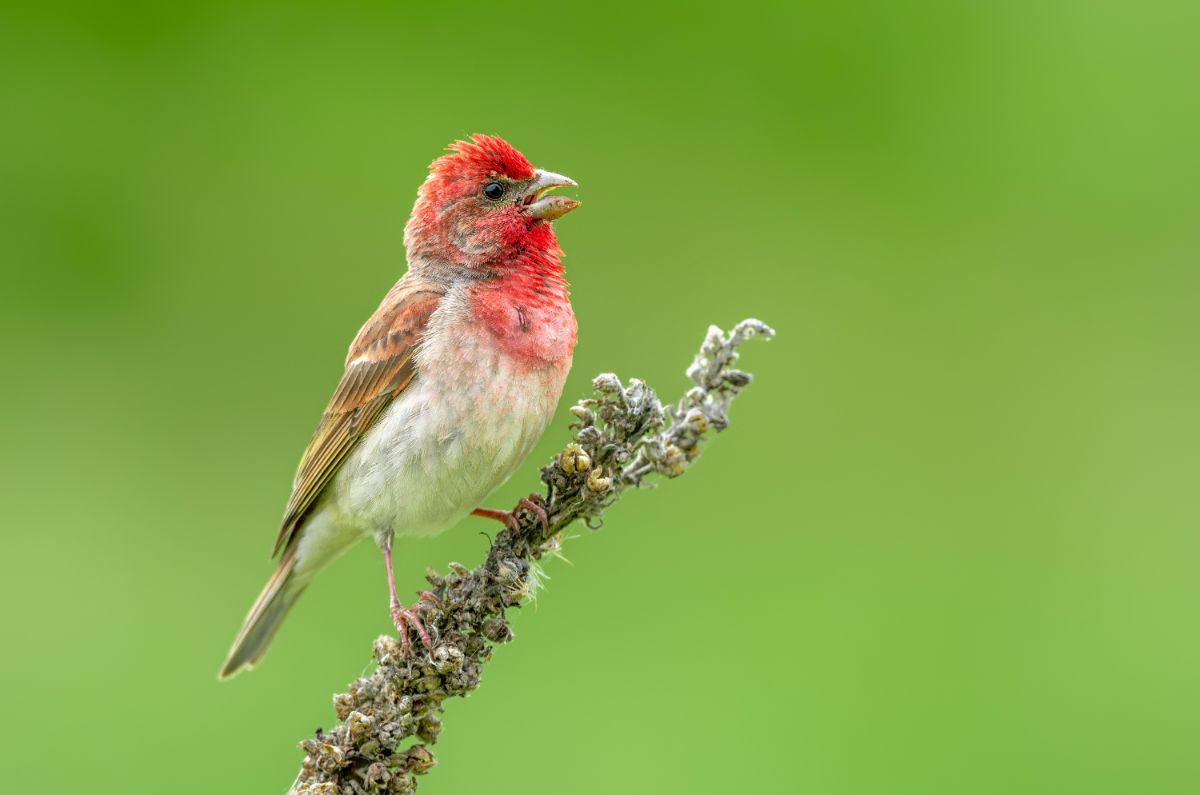
Rose finch is another bird similar to a cardinal due to its bright red coloring. However, in contrast to one, a rose finch doesn’t have a black mask, and they have feathers that are variations of red, pink, orange, and brown colors.
Their diet primarily consists of plant seeds, fruits, and berries. These types of bird breeding habitats are typically in Europe and Asia.
- Length: 13 to 15 cm
- Width: 21 to 27 g
- Wingspan: 22 to 26 cm
4. Red Crossbill
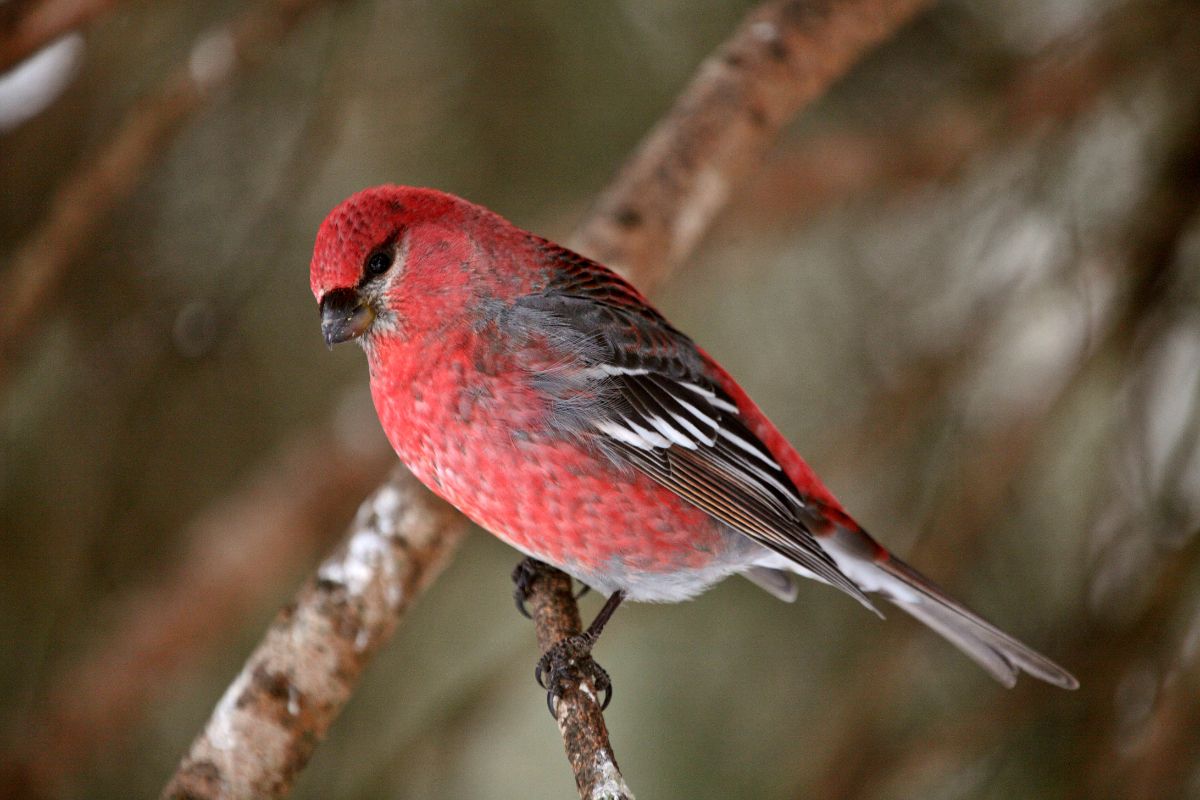
A red crossbill is typically mistaken for a cardinal. The difference in physical traits would be its maroon-red wings and unusually curved bill.
Their specialized bill isn’t just an unusual physical trait; it helps break open cones. Mostly, a red crossbill’s primary habitat is in forests in the Northeastern United States.
- Length: 20 cm
- Width: 40 to 53 g
- Wingspan: 27 to 29 cm
5. House Finch
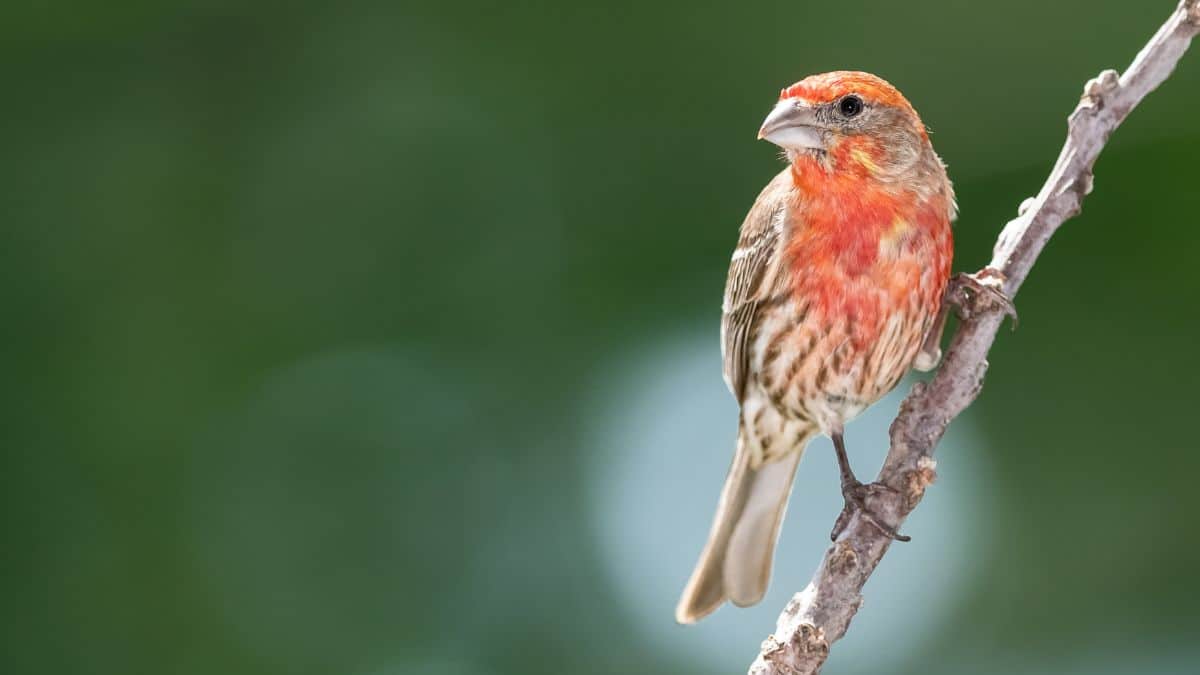
A house finch is often mistaken for a cardinal, but that depends on the feathers’ color, as it can come in different variations. While it does have a splash of red from its head to its chest, the rest of its body is mainly covered in light brown feathers.
Unlike the previously mentioned birds, a house finch’s primary habitat is in urban or forest preserve areas. Their diet consists of seeds, specifically black oil sunflower.
- Length: 13 to 14 cm
- Width: 16 to 27 g
- Wingspan: 20 to 25 cm
6. Hepatic Tanager
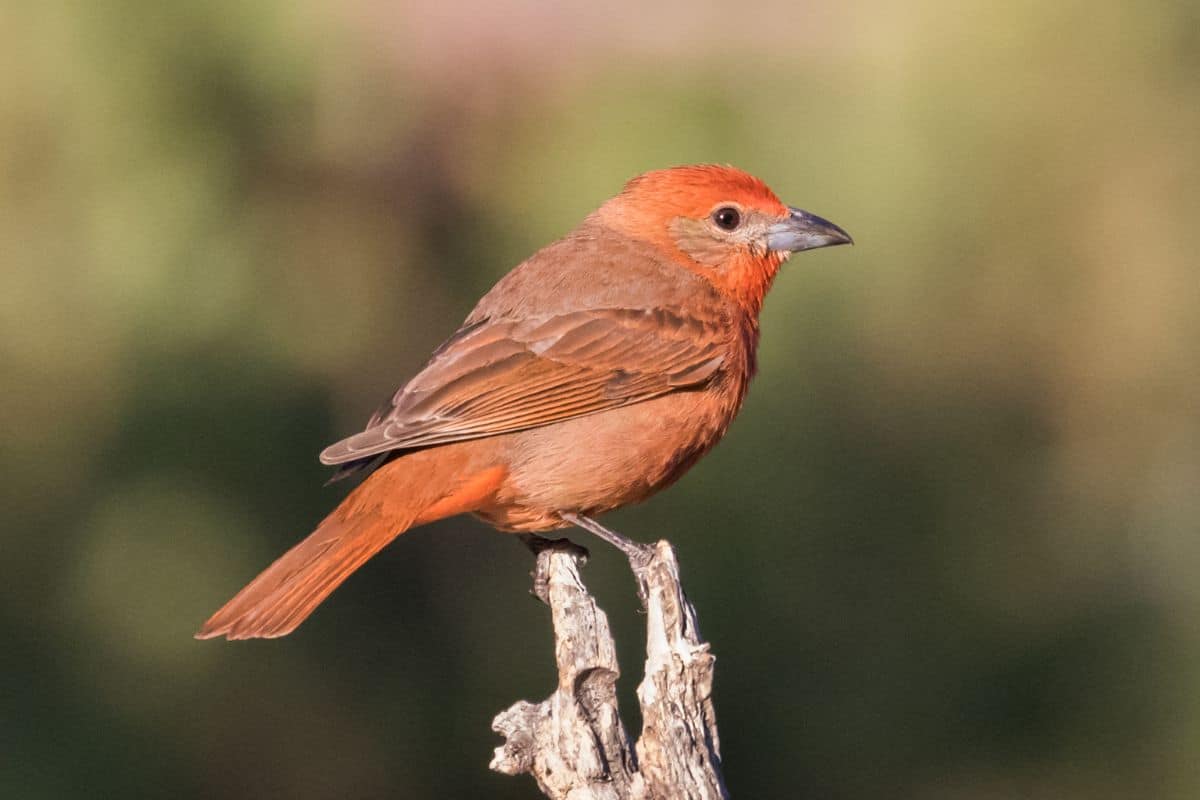
The hepatic tanager is another type of bird similar to a cardinal. The term “hepatic” comes from the physical trait of the male’s reddish upper chest. This bird’s primary habitat consists of dry pine forests, oak forests, savannas, and more.
A Hepatic Tanager is often seen in the Southwest of the US, primarily in Arizona. Due to their bright orange plumage, they’re easy to spot.
- Length: 8.8 to 20 cm
- Width: 23 to 47 g
- Wingspan: 32 cm
7. Flame-colored Tanager
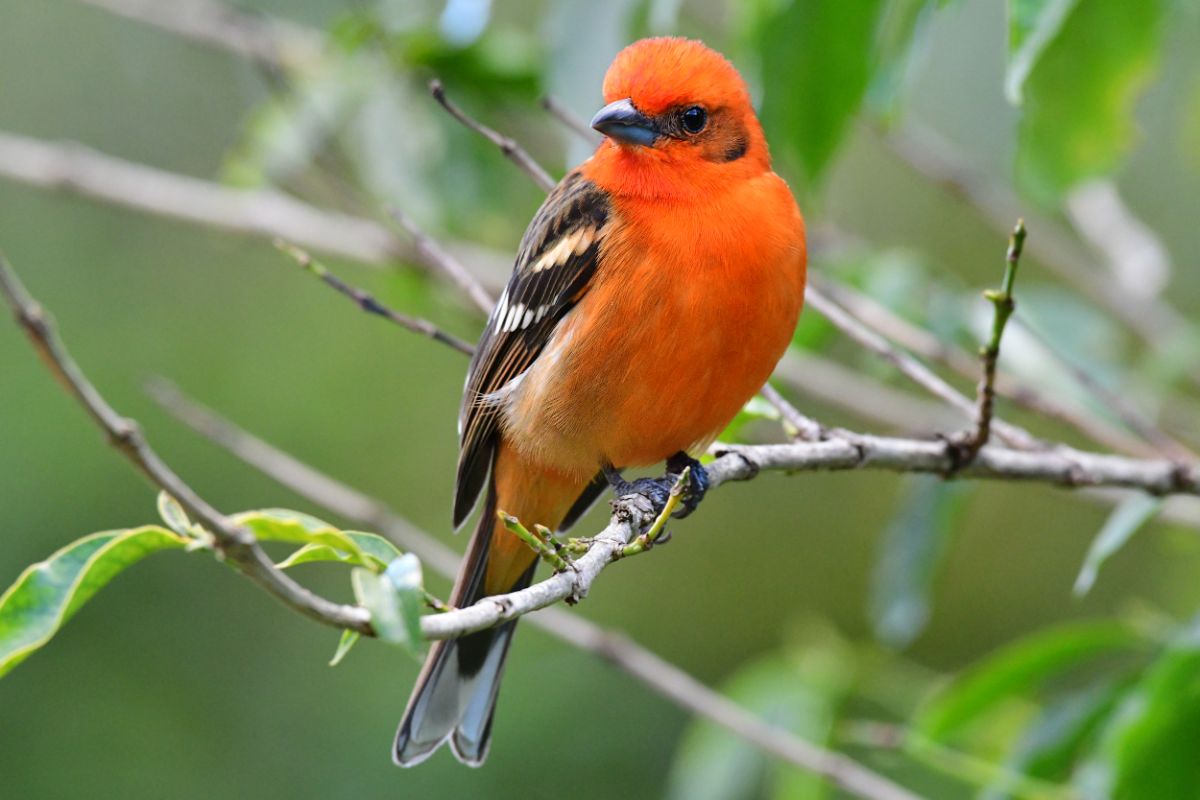
A flame-colored tanager is also a part of the cardinal family. Although their plumage is bright red with a mix of orange, their wings are typically brown. They also have brownish cheeks, and their diet consists of insects and fruits.
You can usually find them in northern Mexico or Central America, but they do migrate.
- Length: 18 to 19 cm
- Width: 33 to 39 g
- Wingspan: 31 cm
8. Pine Grosbeak
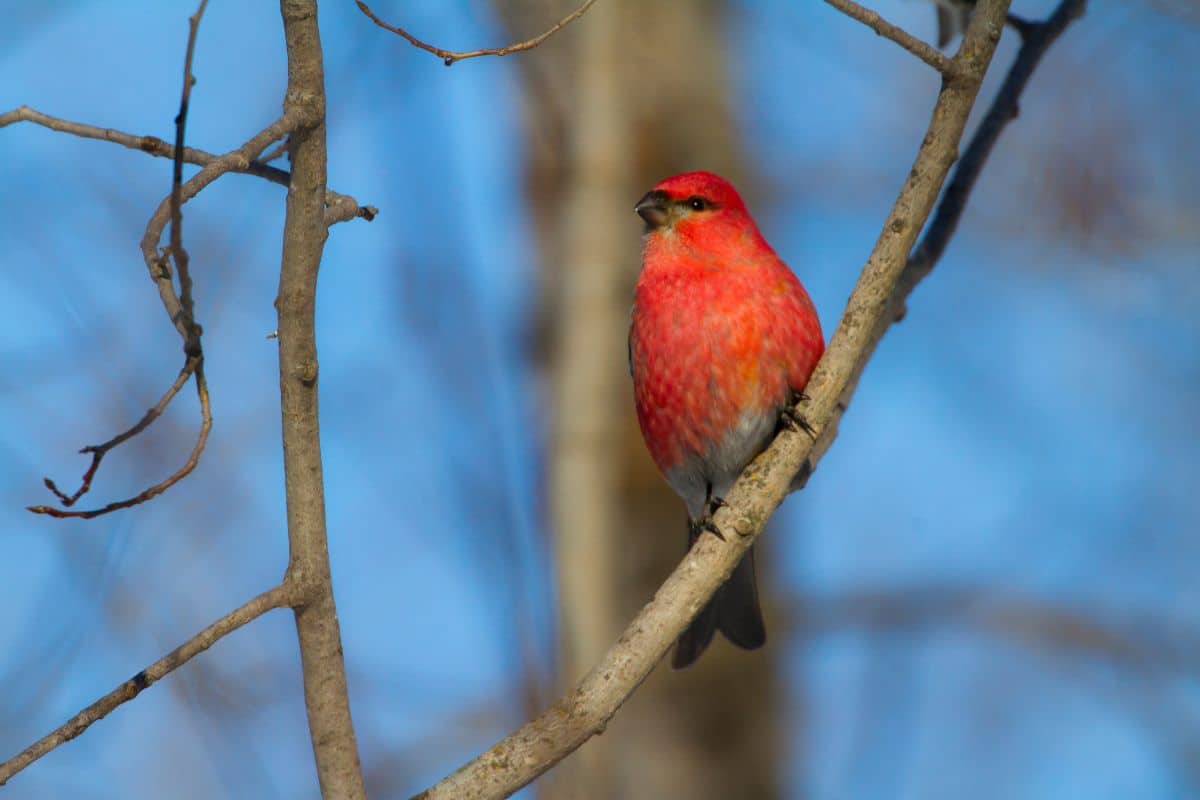
A Pine Grosbeak almost has a similar likeness to a cardinal, but it does have a few differences. Their body is covered in pinkish-red and gray fur, and they often use their short, stout bill to crush seeds. They are often seen in northern states, setting up their nesting in pine or fir forests.
- Length: 20 to 25 cm
- Width: 53 to 78 g
- Wingspan: 33 cm
9. Vermilion Cardinal
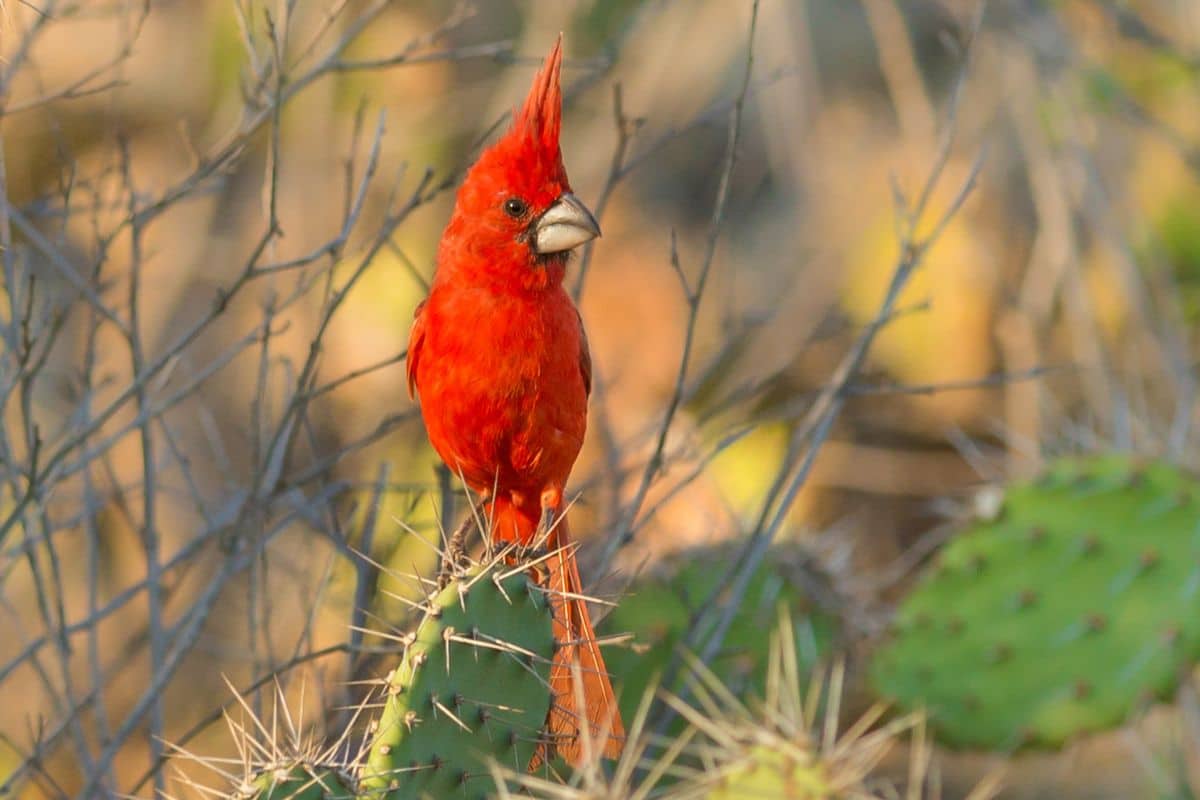
A Vermilion Cardinal is often mistaken for a Northern one due to being in the same family. However, the black mask is around bill rather than covering their entire face. In contrast to other cardinals, their primary habitat is near wetlands or lakes.
They are typically found in swamps in Venezuela and Columbia.
- Length: 19 cm
- Width: 42 to 48 g
- Wingspan: 25 to 31 cm
10. Cedar Waxwing
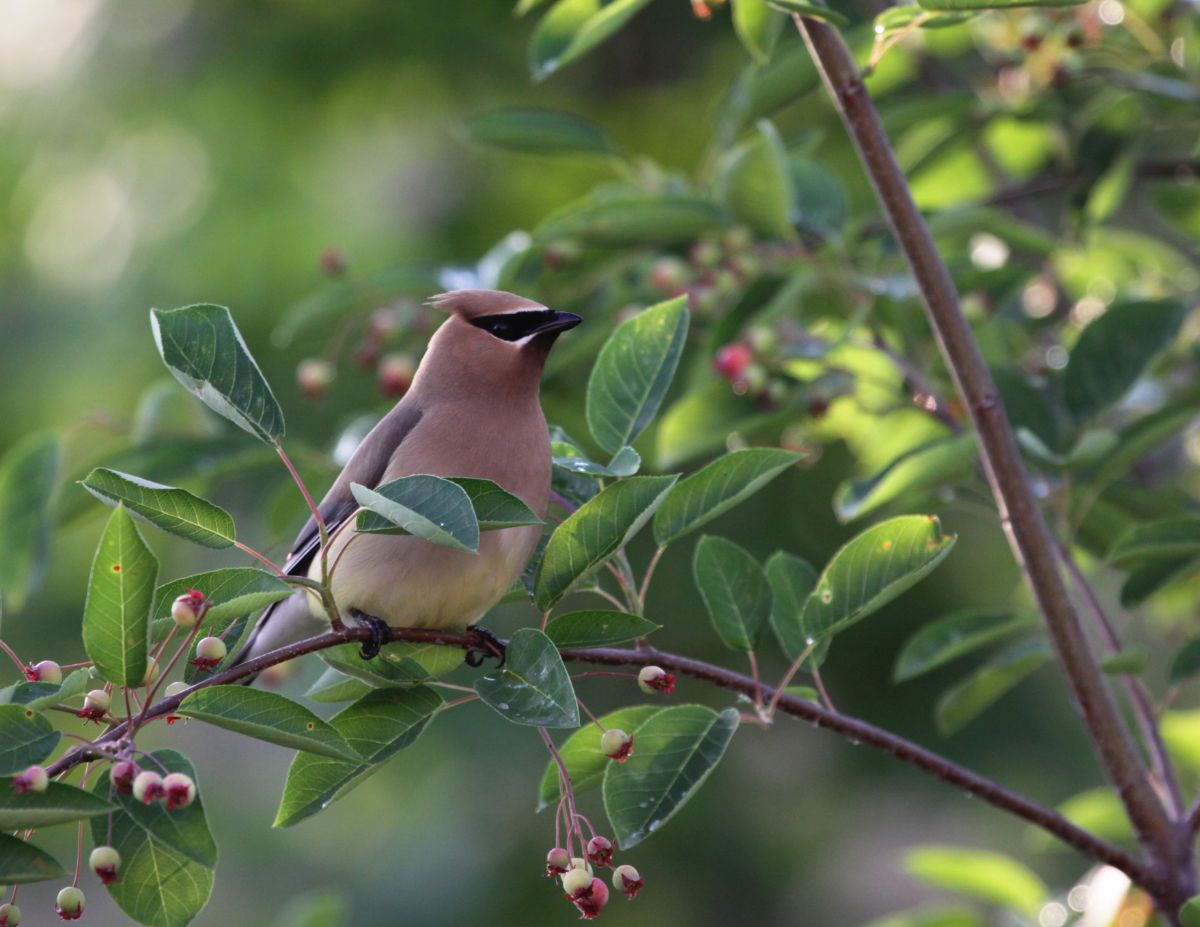
A Cedar Waxwing can be mistaken for a cardinal even though they are different colors. This type of bird has a similar black mask around its eyes and a pointed crest on its head. However, its color is usually a combination of lemon-yellow, brown, and gray. A Cedar waxwing bird is primarily located in Southeastern America.
- Length: 14 to 17 cm
- Width: 32 g
- Wingspan: 22 to 30 cm
11. Phainopepla
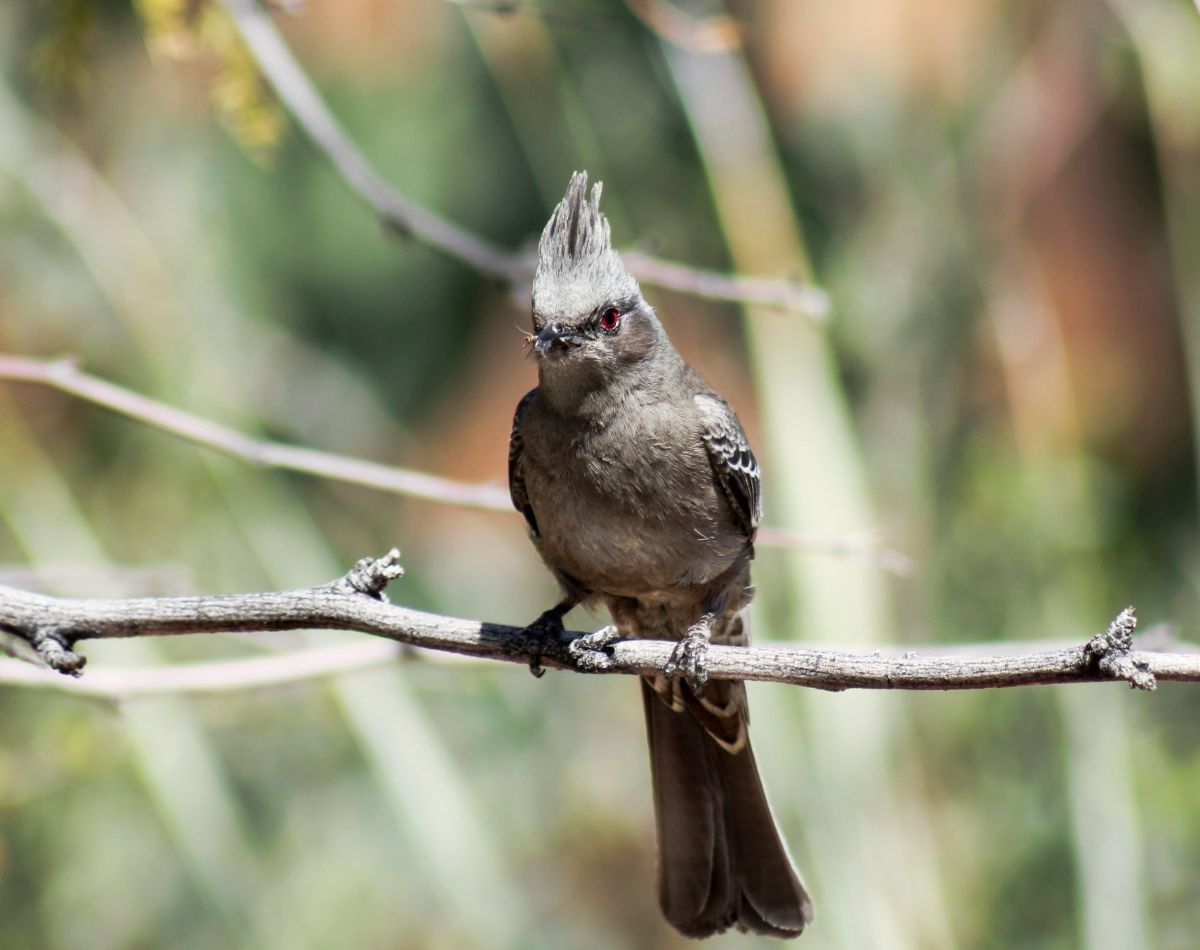
Phainopepla has an entirely different color palette than most cardinals. From their crest to their chest, they are covered in gray feathers and typically have red eyes. Though, compared to cardinals, they also have black masks on their faces.
When it comes to their primary habitat, they are often found in sycamore or oak woodlands in Arizona.
- Length: 18 to 21 cm
- Width: 7.9 to 28.1 g
- Wingspan: 27 to 29 cm
Final Thoughts
Sometimes, whether birdwatching or just spotting one, you might be curious to determine whether or not it’s a cardinal.
There are a variety of ways you can distinguish between the two. If you’re interested in learning more about different kinds of red or other color birds, we recommend keeping a journal and recording what you see. We hope you enjoyed this article on similar red birds.
